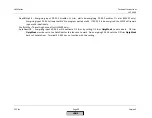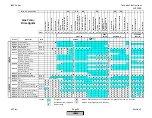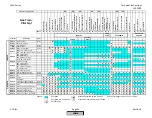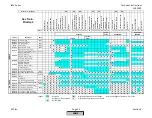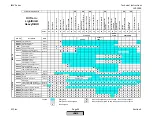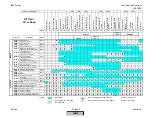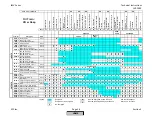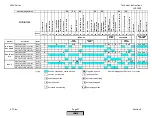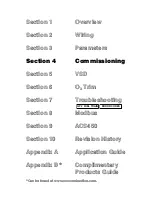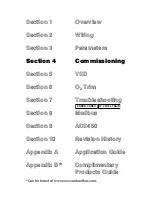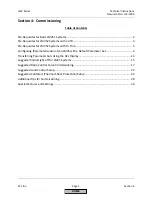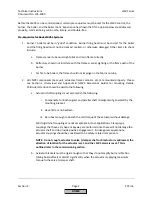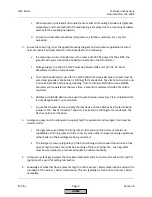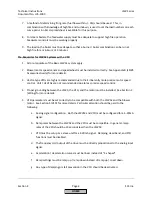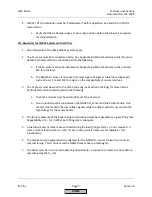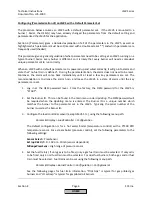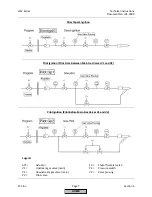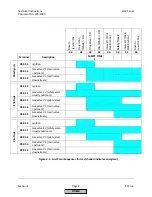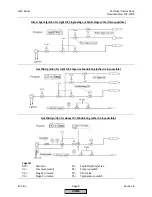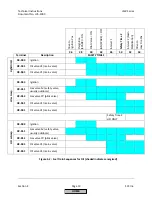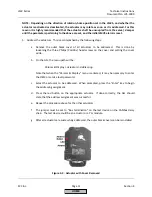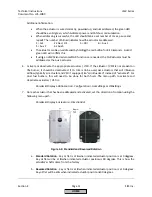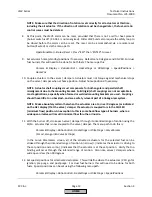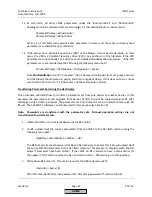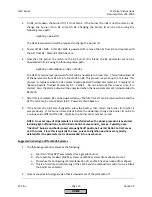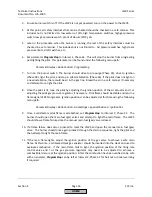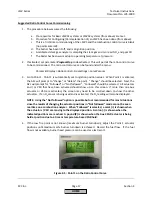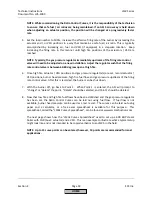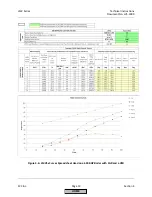
Technical
Instructions
LMV
Series
Document
No.
LV5
‐
1000
Section
4
Page
4
SCC
Inc.
7.
A
method
of
determining
firing
rate
(fuel
flow
within
+/
‐
5%)
should
be
used.
This,
in
combination
with
knowledge
of
high
fire
and
turndown,
is
used
to
set
the
load
numbers
on
each
curve
point.
An
Excel
spreadsheet
is
available
for
this
purpose.
8.
For
steam
boilers,
the
feedwater
supply
must
be
adequate
to
support
high
fire
operation.
Feedwater
controls
must
be
working
properly.
9.
The
load
on
the
boiler
must
be
adequate
so
that
a
burner
/
boiler
combination
can
be
run
at
high
fire
for
a
minimum
of
5
minutes.
Pre
‐
Requisites
for
LMV52
Systems
with
a
VFD
1.
All
pre
‐
requisites
of
the
Basic
LMV51
system
apply.
2.
Blower
motor
speed
sensor
and
speed
wheel
must
be
installed
correctly.
See
Appendix
B
(LMV5
Accessories
Guide)
for
more
details.
3.
Vector
‐
type
VFDs
are
highly
recommended
due
to
their
inherently
more
precise
motor
speed
control.
Volt
/
Hz
VFDs
are
not
recommended
due
to
less
precise
speed
control.
4.
Proper
grounding
between
the
LMV5,
the
VFD,
and
the
motor
must
be
installed.
See
Section
2
(Wiring)
for
more
details.
5.
VFD
parameters
must
be
set
correctly
to
be
compatible
with
both
the
LMV52
and
the
blower
motor.
See
Section
5
(VSD)
for
more
details.
Particular
attention
should
be
paid
to
the
following:
a.
Analog
signal
configuration.
Both
the
LMV52
and
VFD
must
be
configured
for
a
4
‐
20mA
signal.
b.
Ramp
rates
between
the
LMV52
and
the
VFD
must
be
compatible.
In
general,
ramp
rates
of
the
VFD
should
be
10
seconds
less
than
the
LMV52.
c.
VFD
must
be
set
up
as
a
slave
unit
for
a
4
‐
20mA
signal.
Damping,
dead
band,
and
PID
functions
must
be
disabled.
d.
The
frequency
(Hz)
output
of
the
drive
must
be
directly
proportional
to
the
analog
input
signal.
e.
Acceleration
/
deceleration
curves
must
be
linear
instead
of
“S
‐
shaped”.
f.
Ramp
settings
must
be
ramp
up
/
ramp
down
instead
of
ramp
up
/
coast
down.
g.
Any
type
of
damping
or
stall
prevention
in
the
VFD
should
be
deactivated.
HOME
Summary of Contents for LMV 5 Series
Page 2: ...Intentionally Left Blank ...
Page 41: ...LMV Series Technical Instructions Document No LV5 1000 SCC Inc Page 7 Section 2 HOME ...
Page 42: ...Technical Instructions LMV Series Document No LV5 1000 Section 2 Page 8 SCC Inc HOME ...
Page 43: ...LMV Series Technical Instructions Document No LV5 1000 SCC Inc Page 9 Section 2 HOME ...
Page 44: ...Technical Instructions LMV Series Document No LV5 1000 Section 2 Page 10 SCC Inc HOME ...
Page 45: ...LMV Series Technical Instructions Document No LV5 1000 SCC Inc Page 11 Section 2 HOME ...
Page 46: ...Technical Instructions LMV Series Document No LV5 1000 Section 2 Page 12 SCC Inc HOME ...
Page 47: ...LMV Series Technical Instructions Document No LV5 1000 SCC Inc Page 13 Section 2 HOME ...
Page 48: ...Technical Instructions LMV Series Document No LV5 1000 Section 2 Page 14 SCC Inc HOME ...
Page 49: ...LMV Series Technical Instructions Document No LV5 1000 SCC Inc Page 15 Section 2 HOME ...
Page 50: ...Technical Instructions LMV Series Document No LV5 1000 Section 2 Page 16 SCC Inc HOME ...
Page 51: ...LMV Series Technical Instructions Document No LV5 1000 SCC Inc Page 17 Section 2 HOME ...
Page 52: ...Technical Instructions LMV Series Document No LV5 1000 Section 2 Page 18 SCC Inc HOME ...
Page 53: ...LMV Series Technical Instructions Document No LV5 1000 SCC Inc Page 19 Section 2 HOME ...
Page 54: ...Technical Instructions LMV Series Document No LV5 1000 Section 2 Page 20 SCC Inc HOME ...
Page 55: ...LMV Series Technical Instructions Document No LV5 1000 SCC Inc Page 21 Section 2 HOME ...
Page 373: ...Intentionally Left Blank ...

